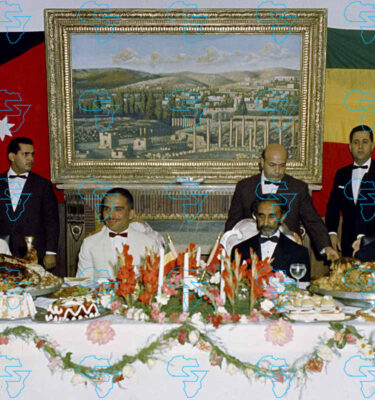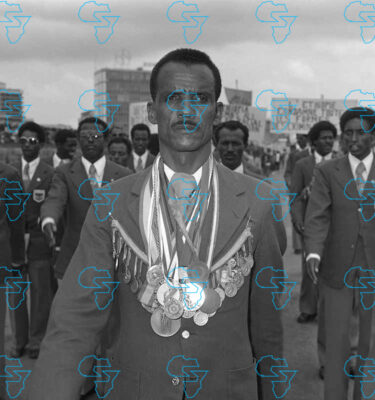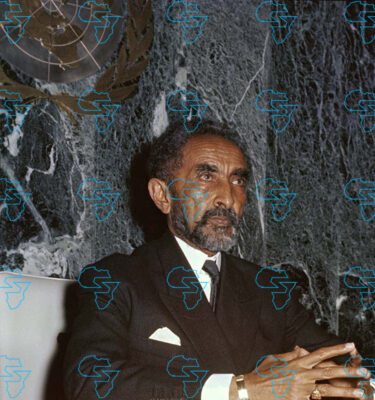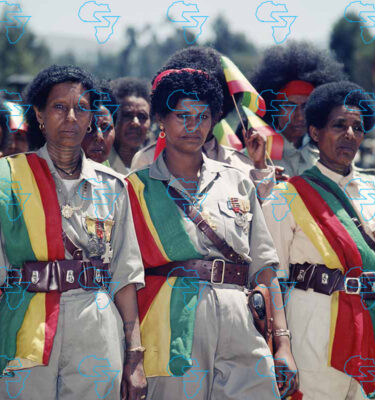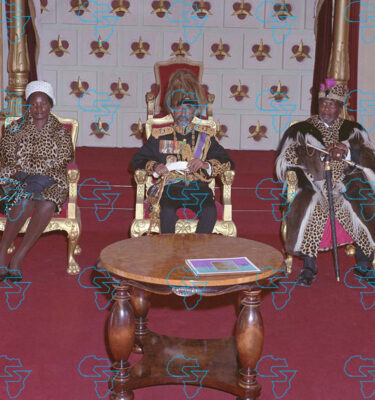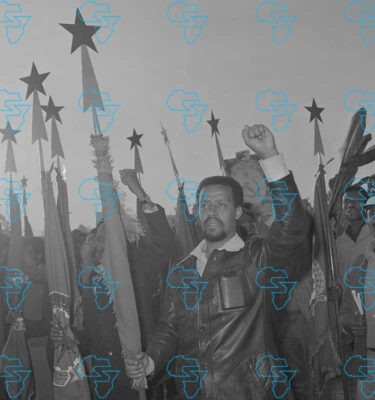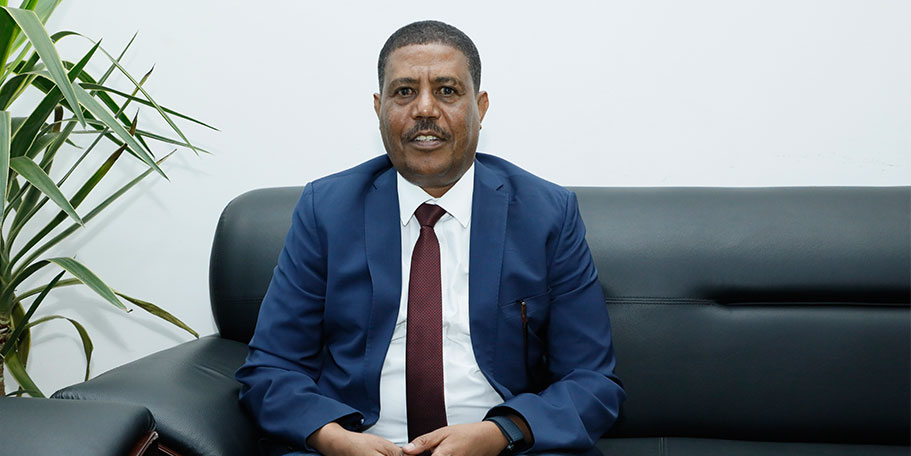
As political rifts in Ethiopia’s northernmost region of Tigray deepen, some of its most notable political figures have come together to form a new political entity. Among the leadership of the Simret (Tigray Democratic Solidarity) Party are veterans like Getachew Reda, former president of the Tigray Interim Administration, and Professor Kindeya Gebrehiwot.
While the base, legitimacy, and impact of the new party remain subject to question, it nevertheless claims to have come with a new political dispensation for Tigrayans.
Professor Kindeya Gebrehiwot serves as head of Foreign Relations for the Democratic Solidarity Party (Solidarity), an emerging political actor in Tigray’s post-conflict landscape.
A former president of Mekelle University, he holds a PhD in Forest Sciences from the University of Göttingen in Germany. In this interview with The Reporter’s Nardos Yoseph, Professor Kindeya discusses Solidarity’s decision to adopt a liberal democratic framework, the risks facing Tigray’s territorial integrity, and what he describes as mounting threats to the region’s survival.
He raises concerns over alleged illicit gold extraction involving members of a task force established to prevent such activity, and offers his party’s perspective on the evolving ties between the TPLF and Eritrea.
– Advertisement –
The conversation also touches on a wide range of other regional and federal issues surrounding Tigray’s future. EXCERPTS:
The Reporter: The Democratic Solidarity Party (Solidarity) emerged in the aftermath of a brutal war and at a time when international attention toward Ethiopia’s conflicts had noticeably waned. In this context, what unique role can your party play in restoring Tigray’s image abroad—particularly in Western countries, where it has suffered politically due to the TPLF’s past conduct? What strategies do you propose to recover the political capital Tigray once held in those countries, especially in light of ongoing criticism regarding the TPLF’s legacy?
Kindeya Gebrehiwot (Prof.): Tigray remains in a post-war state. We have not yet overcome the full consequences of the conflict. It is within this fragile context that our party was founded. Without delving into whether those perceptions are justified or not, it is clear that unfavorable views about Tigray have emerged internationally, primarily rooted in the legacy of the TPLF.
I believe Solidarity can play a meaningful role in reshaping those perceptions. Our program is designed to contribute to this effort. The manifesto we are currently preparing focuses on fostering cooperation, promoting transparency, and ensuring accountability—principles that can help redefine how Tigray is viewed globally.
What kind of program and manifesto are you developing? What are its contents, and what is its central focus?
The foundation of peace, democracy, and development lies in securing public engagement from the outset. The people of Tigray are emerging from profound trauma. Post-conflict societies face complex and deeply rooted challenges. Our immediate task is to support recovery and facilitate the rebuilding process. To do that, we must operate transparently. There can be no room for secrecy or hidden agendas.
Currently, the manifesto and program are in draft form and will be ratified by a general assembly. However, we are not limiting the review process to party members alone. We have already begun distributing the draft to individuals across Tigray to solicit feedback. The final version will incorporate the general public’s input.
The entire framework is grounded in a realistic understanding of the situation on the ground. Tigrayans have a profound appreciation for peace and stability, which is why our program prioritizes establishing order as a prerequisite to rapid development.
Moreover, we reject the notion that a single party or group should dominate. We have no such ambition. Solidarity will present its ideas—some will agree, others may not—but we intend to collaborate even with those who disagree. This contrasts sharply with the old mindset of exclusion and unilateralism.
Our program is also inclusive in design. It seeks to open up political participation not only to existing actors but also to those who have historically been excluded or disengaged from politics. We want to make room for fresh and diverse voices.
Investigations by credible international institutions have confirmed that Tigray’s illegal gold economy—expanding rapidly—has had a significant impact on the region’s socioeconomic fabric. What is your party’s position on this issue?
The illegal extraction of minerals in Tigray is deeply alarming. Dangerous chemicals are being used. This is not just about gold—Tigray is rich in a variety of minerals. However, instead of these resources being processed legally and delivered to the National Bank, they are being siphoned off through illicit channels.
We are fully aware of the amount of gold that has formally entered the National Bank from Tigray. But a much larger portion is falling into the hands of a few powerful traders and middlemen. This has become a major challenge to peace, development, and good governance. These operations are well-coordinated, secretive, and employ large-scale machinery. They are also causing serious environmental damage.
The chemicals used are already harming livestock and human health. Their long-term effects will haunt us for years. This must stop. A robust system is needed—one that includes community participation to ensure laws are actually enforced. There’s no legal obstacle to this—the missing ingredient is public involvement.
Our party has a clear roadmap for addressing the issue. Everyone should benefit from the region’s mineral wealth, but it must be done in a way that is environmentally sustainable and legally sound. This is a national resource. Coordination with the federal government is essential. What we have now is a chaotic and fear-driven system. We believe it can—and must—be reformed.
On Friday, June 20, 2025, your party participated in a forum organized by an institute at Addis Ababa University. One of your founding members and former Tigray Interim Administration President, Getachew Reda, was also present. During the discussion, participants alleged that the illegal mining operations that began during his administration are now expanding under the current Interim Administration led by Lieutenant General Tadesse Werede. Even under Getachew’s leadership, there were claims of mounting instability, and he admitted to it publicly on several occasions. Last week, participants further asserted that governance has since deteriorated. Given these concerns, is your party currently conducting research on the scale of illegal mining? Do you have mechanisms for monitoring it? Does your manifesto address the issue in a way that can yield practical results?
Regarding illegal mining in Tigray, access to research and information is not the problem. Everyone knows who is involved and where. Yes, we are conducting studies. In fact, during our time in the Interim Administration, we issued a directive and established a task force to address the issue. The Deputy President of the Administration was designated to lead it.
However, the task force never became operational. The main reason? Several individuals appointed to it were themselves involved in illegal mining. This highlights the need for institutional reform. The issue is not data—it’s about enforcement. If we bring transparency and dismantle the culture of secrecy, then real action becomes possible.
Right now, the most affected area is around Shire in the North Western Zone. There is extensive knowledge and testimony from those familiar with the situation. But the risks faced by whistleblowers are also well known. These mining operations are protected by weapons and organized armed groups. The first step is dismantling that structure.
During our tenure, we decided to suspend nearly all mining activity until proper legal frameworks—with community oversight—were in place. That decision was never implemented, again due to internal complicity. So our current position is clear: the structure must be changed. That is the non-negotiable first step.
Does your party have concrete policy proposals to ensure legal compliance, eliminate secrecy, and enable institutional reform in Tigray’s mining sector?
Yes, our policy clearly outlines a legal and sustainable mining framework. Tigray’s mineral wealth is a strategic advantage—but only if managed properly. Without regulation, only a few benefit while the majority suffer.
In the wake of war, with many displaced, unemployed, and young people in dire need of opportunity, the mining sector can and should be a major source of employment. Our plan envisions a mining system that includes meaningful participation from investors, academics, and government actors. It is built on both federal and international legal standards, with provisions for implementation on the ground.
Western diplomats have been criticized for tolerating TPLF dominance while marginalizing grassroots voices in Tigray. Other criticisms even go as far as to say they enabled the TPLF by creating a favorable political environment for authoritarian rule. Do you believe they have, directly or indirectly, played an enabling role? How will your party hold such actors accountable—or reframe those relationships going forward?
I do not subscribe to the narrative that Western actors created an enabling environment for the TPLF. Their primary interest lies with the people, not the ruling party. What happens—or doesn’t happen—within Tigray politically is not determined by them. Let’s also be clear: Western governments do not exclusively work with democracies. They engage with all kinds of regimes. So, the labeling and condemnation of these relationships simply because of ties to the TPLF doesn’t sit well with me.
If there are “enablers” in this crisis, then we are all responsible. The current situation in Tigray is one the TPLF itself allowed to unfold. Solidarity does not seek to replace one dominant party with another. We are currently in dialogue with various political parties in Tigray. We do not aim for a 100-percent win. That mindset—it’s too good to be true—is precisely what we want to challenge.
We understand the legacy of exclusion. Not everyone will find joy in a one-party state. What we advocate for is cooperation and shared responsibility on key issues that matter for Tigray. Until we reach consensus, we are willing to work with other political actors. The West has shown immense support for the people of Tigray, especially during the war. They made serious efforts to bring peace. Their push for the Pretoria Agreement—and previous efforts before it—demonstrate that commitment. Even today, many diplomats travel more frequently to Tigray than to any other region within the country, precisely because they care about peace, observe the current escalation and try to put a halt into it before it goes further.
There is increasing Western engagement—through articles, research, and advocacy—on issues of accountability and justice in Tigray. These are efforts we support. Our party believes in an accountable political system. We reject the “my way or the highway” approach. Everyone must have a voice and a place. That is the kind of environment we want to build. And that is how we interpret Western involvement—not as enabling dominance, but as supporting peace and pluralism.
You have frequently emphasized your party’s intentional move towards inclusivity. Before the war broke out, on August 6, 2020, the Tigray State Council adopted a constitutional amendment to shift from a proportional electoral system to a majoritarian one. Although the amendment retained 80 percent of the existing framework and only altered 20 percent, it still triggered opposition and complaints from rival parties. Yet it also reflected a push toward reform. What is your take on this?
It was not enough.
Today, your party says it does not seek to preserve one-party rule. Does that mean you’ve revised your earlier position one you retained when you were part of the Tplf? Or how do you plan to manage that shift in practice?
We’re a political party, not a government. Our role is to shape ideas, not to impose governance. What we want is a political space that is broad and representative. We are not claiming a monopoly over leadership.
So, when administrative and constitutional reforms do come—especially as Tigray transitions back to constitutional rule—would you support changes to the council seat distribution model?
Absolutely. We would strongly support such reforms.
There are reports that the Tigray Interim Administration’s inability to fill the governance vacuum—particularly in rural areas—has given rise to informal and illicit structures: black market transactions, arms trade and circulation, and the diversion of humanitarian aid. How does the Solidarity Party plan to address these governance breakdowns and the institutional vacuum? And what solution do you propose?
At the moment, Tigray is fragmented into multiple power centers. There are many authorities—what you could call multiple governments. As we know, the “monopoly of violence” is supposed to belong to one legitimate government. But now we have a military, a TPLF-affiliated structure that still claims authority, the Interim Administration, and various militia groups with influence and arms. So the monopoly of violence is distributed across these various centers of power, which creates chaos. That’s why we’re seeing contraband, illicit arms trade, and more. It’s deeply troubling to see humanitarian aid, especially grain, being diverted. There have been studies and investigations on this—President Getachew himself commissioned a report that outlines the findings and recommendations.
As I mentioned earlier in the context of illicit mining, many of the actors involved in that sector are also operating in this fractured environment of competing power centers. These actors are either part of—or outsourced by—those in power. No action is taken against them because the institutional setup lacks enforcement capacity. One of our party’s core demands is that this fragmentation must end.
In terms of governance, our party promotes local governance and community ownership of leadership. Previously, we had a one-party system where party appointees occupied all administrative positions across districts and zones. That practice has continued under the current appointment process—it’s the same authoritarian approach. Now, TPLF remains a dominant power center, and the Interim Administration is another. The military is yet another. What we need is one legitimate structure of governance, rooted in constitutional order. From there, the people must be able to elect their own leaders.
We advocate for local elections. Even if regional elections are delayed, at least at the local level, the public should be able to select its own leaders. This is the only way out of the mess we’re in. In the past, TPLF could say, “these are our appointees,” while we insisted that leadership should come from the will of the people. In certain places like Adigrat and Adi Gudom, we experimented with this—letting the community elect local administrators. If that approach had continued, we believe the public would now have stronger ownership of governance. But currently, the people are being governed by those they did not choose, and they feel powerless to change it.
So, one of the key reforms must be giving people the right to elect their leaders. It doesn’t have to be a full-fledged election right away—even temporary mechanisms that allow communities to choose their own representatives would be an improvement. As it stands now, in any election, one party wins 100% of the seats. That party’s central office manages everything. In some cases, a person will be transferred from one district to another without public input—completely top-down. That must change.
In light of the atrocities committed by Eritrean forces during the war—which have been well-documented by eyewitnesses, international human rights organizations, and various reports—there are still some who argue that Tigray must re-engage with Asmara to achieve regional stability. Is Solidarity willing to negotiate with Eritrea? And what are your party’s red lines or preconditions?
Geography doesn’t choose neighbors—we’re bound by it. In principle, we want peaceful and cooperative relations with all neighbors, including Eritrea. We should operate on the basis of mutual trust and respect. With Eritrea in particular, we share deep cultural, religious, linguistic, and historical ties. We want to work with the Eritrean people. But let me be clear: there must be a red line.
We all know what the Eritrean regime, especially the Shabiya leadership, did to us. There must be conditions. First, we hear there are still ambiguous relationships at play. But our stance is clear: Tigray should never again become a theater of war. Whatever relations we build with Eritrea must never drag our people back into conflict. That’s our red line.
Moreover, the Eritrean government is still occupying territories in Tigray that are part of Tigray, Ethiopia. Our relatives have been suffering under that occupation for years now. That must end. It’s non-negotiable. There’s talk of the Algiers Agreement, but this matter requires resolution at the international level. Given the current situation, this is no longer a straightforward legal dispute—parts of Tigray that were never in dispute in the Algiers agreement still remain under Eritrean military control.
Beyond the territorial issue, we must ensure international accountability for the war crimes committed by Eritrean forces during the conflict. Ultimately, many forecasts can be made, but the reality is that a profound wound has been inflicted on Tigray—and that has to be addressed. Numerous reports can attest to that. For us, this is a red line. However, we distinguish between the regime and the Eritrean people. There are peace-seeking forces within Eritrea, and working with them poses no problem.
In fact, we believe cooperation shouldn’t only be with Eritrea—it must also extend to the Amhara and Afar regions, and all others. We believe in inclusive cooperation.
Right now, in many places, there are reports of obscure engagements involving Tigray and Eritrea. Often, however, your party appears indifferent or absent when your fellow opposition members express concern about these developments. Why is that? Why do you describe the current engagement as lacking clarity? What does this relationship mean to you?
First of all, it’s not as obscure as it may appear. There are actual owners behind it. What’s happening is being orchestrated deliberately. To be clear, any engagement with the Eritrean government cannot occur without their knowledge—those familiar with the nature of the Eritrean regime understand this. The same goes for Tigray—we know the key actors in this issue. The actors behind this have names. So, sometimes silence is used as a strategy to mask what is clearly orchestrated. Even informal engagements have authors. So, what is the intention behind it?
There are certain issues that are public knowledge and require resolution. And particularly, when it comes to the Eritrean government, there are longstanding, unresolved grievances. Even today, some areas in Tigray remain under the control of the Eritrean military, and our people in those areas continue to suffer. These places have not been returned. There are numerous atrocities that demand accountability. There are still efforts underway to turn Tigray into a battlefield once again. That’s why I don’t think this silent, vague engagement serves any meaningful purpose.
Also, let’s not forget that international laws exist. At the very least, there are legal frameworks for addressing cross-border issues—for example, preventing conflict from spilling across borders. There are trade laws as well. Other international laws also apply. The kind of engagement we’re seeing now is not happening out of goodwill—there are those behind it, with interests. Fundamentally, this is part of a broader scheme to drag Tigray back into war. As a Party, we strongly oppose this. It is unacceptable. We’ve issued statements on the matter. And again, as I said, this isn’t a mysterious situation—it is quite transparent, and there are actors with clear ownership behind it.
Most of the humanitarian aid and reconstruction funding for Tigray has largely been dependent on donors. However, numerous reports and various other sources suggest this support is being funneled through political brokers and networks. What is your party’s assessment of this situation? And further, what mechanisms would Solidarity establish to ensure that donor funds and other forms of support are neither manipulated by political elites nor captured within elite networks?
To begin with your first question—yes, it’s true. There’s a concrete study confirming that much of the humanitarian assistance collected has not been used appropriately. There has been a trend of misappropriation. This has created a situation where certain entities, which should be held accountable, have become shielded from scrutiny. As I mentioned earlier, there are multiple power centers in the region, and each of them tends to exploit such resources based on their own capabilities. This is a blatant and visible form of exploitation. It must be changed.
The reason is simple—Tigray needs resources. If those resources are not used properly, it leads to further disaster. This is a region that has already suffered immense loss and devastation. If the aid meant for recovery is also diverted or squandered, it adds another layer of crisis. That’s the issue we’re raising.
The core solution is institutional reconstruction. By that, we mean the establishment of transparent institutions that ensure accountability. In some areas, aid agencies have already begun implementing systems where beneficiary selection committees are directly elected by the people. USAID, for example, had started moving in this direction. They’ve tried to address many of these problems. However, what’s needed from the government side is clear structure and transparent systems that guarantee accountability.
Ultimately, it must be a participatory process—where beneficiaries themselves are involved. When the community that receives the support is aware of where its share is going, they naturally become watchdogs. That’s how real accountability is achieved.
When your party formally announced its founding principles, there was considerable discussion around your stated alignment with liberal democratic governance. This came across as controversial in Tigray, where such an ideological framework is largely unfamiliar and has been portrayed as alien. In addition, Tigray remains under a wartime security apparatus. Given this context, how does your party reconcile its choice to pursue a liberal democratic system? What guarantees can you provide that your platform is not just a cosmetic departure from the previous or existing political order?
Right now in Tigray, the top priority is survival. Everything else, including engagement with broader global ideas, comes after that. In other words, so long as the question of survival is still unresolved, issues like development or ideological vision are secondary.
As we’ve observed in recent consultations, the current demand in Tigray is for continued existence and peace. Our party is focused on how to respond to those core demands. Once we’ve addressed them, we can move on to global ideological matters.
When we look at the paths we’ve taken before—those have failed. There’s no need to return to discredited approaches. If we choose to follow populist democracy or continue the same route, we’ll end up in the same dead end. So what we must try now is something we haven’t tried before.
That’s where we stand: with a firm conviction that unless we change the existing system, there can be no sustainable future for Tigray. In fact, we believe the current situation in Tigray is an opportune moment to introduce a new global vision on local soil. Tigray is a largely homogeneous society, with shared norms and similar social behavior. Liberal democratic systems are well-suited to such societies.
That said, discussing ideologies is appealing, but before that, peace in Tigray must be ensured. Without peace, ideology has no foundation.
When you say your party has chosen liberal democracy, the recurring critique is that in Tigray, everyone is aware of what the TPLF does—what is happening, how things function. Do you think the public still has a strong affinity for TPLF’s political ideology? How difficult would it be to shift towards liberal democracy?
When someone is a beneficiary—whether under revolutionary democracy or liberal democracy—they don’t focus on ideological labels. What matters to them is whether they are actually benefiting. The farmer, the worker—everyone—wants to be assured that they are being served.
The notion of a strong bond with TPLF’s ideology wasn’t really there in the first place. Rather, there was simply a deeply rooted belief that “the TPLF is always right.” That was the dominant mindset. But in my view, that belief has now begun to shift. There is a breakthrough. What didn’t exist before is now here: people are questioning governance openly and transparently.
And as things currently stand, the TPLF is no longer even a legal entity—it’s being referred to by a name that lacks legal recognition. So, the public’s attitude is changing, and we are now witnessing more scrutiny and demand for accountability.
Solidarity emerged while much of Western and Southern Tigray were said to be under outside control—more precisely under the control of Amhara forces and Eritrean troops. How does your party intend to address the issue of territorial integrity? The people of Tigray currently have no formal representation within the institutions of the federal government. Yet laws continue to be passed in their absence. What is your position on this?
The boundaries of Tigray are clearly defined by the Constitution. Our position is that Tigray must be restored to the territorial arrangement outlined in the Constitution. This is a black-and-white issue—it is non-negotiable.
Are you referring to the Constitution of the Tigray Regional State or the Federal Constitution? Because critics argue that the latter does not clearly define the borders of Tigray.
The territorial extent of Tigray is clear, including in the Federal Constitution. And even if it were not clearly written, you can’t have a region without defined boundaries. If there is ambiguity, then anyone could wake up one day and declare themselves a region. That leads to fragmentation—two, three more regions. So, the boundaries of Tigray are well known. What we’re talking about isn’t a small sliver of land—this is about vast areas that constitute a third of Tigray’s land. Entire zones have yet to be returned.
This includes Western Tigray, North Western areas, and lands still occupied by Eritrean forces. When we speak of territorial integrity, we mean all of Tigray’s constitutionally defined land, including areas occupied by a foreign army. These must be fully returned.
Millions of our people remain displaced for a fifth consecutive year. They must be returned to their homes. The federal government has also stated that these displaced persons must be returned. This must be implemented. When constitutional order is restored in Tigray, that will also restore the legitimate territorial arrangement of the region.
Even the Pretoria Agreement makes clear that constitutional order must be restored. That includes the return of all lands based on the Constitution. If there are disputes, the constitutional system provides mechanisms for resolving them.
.
.
.
#Multiple #Centers #Power #Tigray #Pushes #Region #State #Chaos #Fear
Source link



